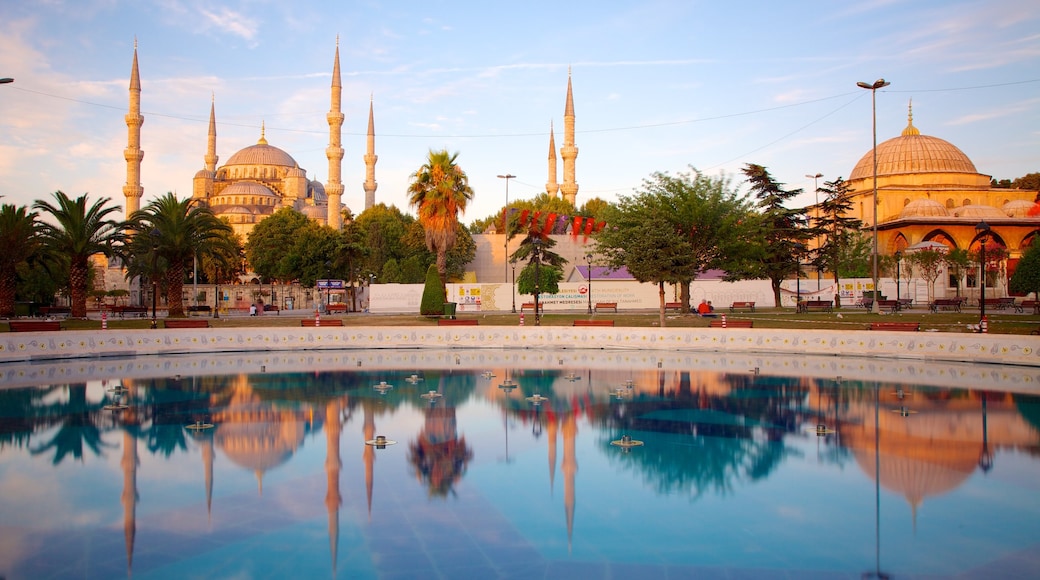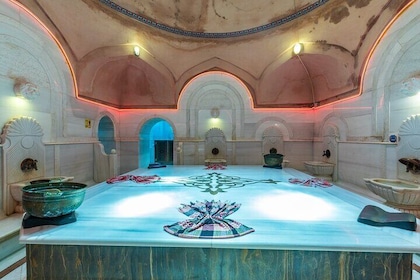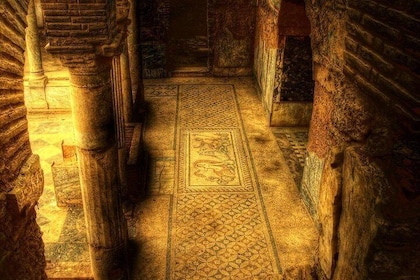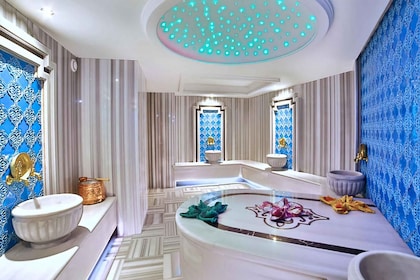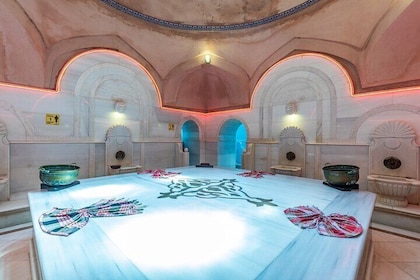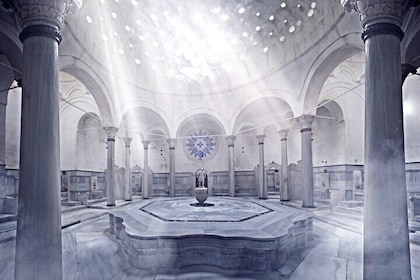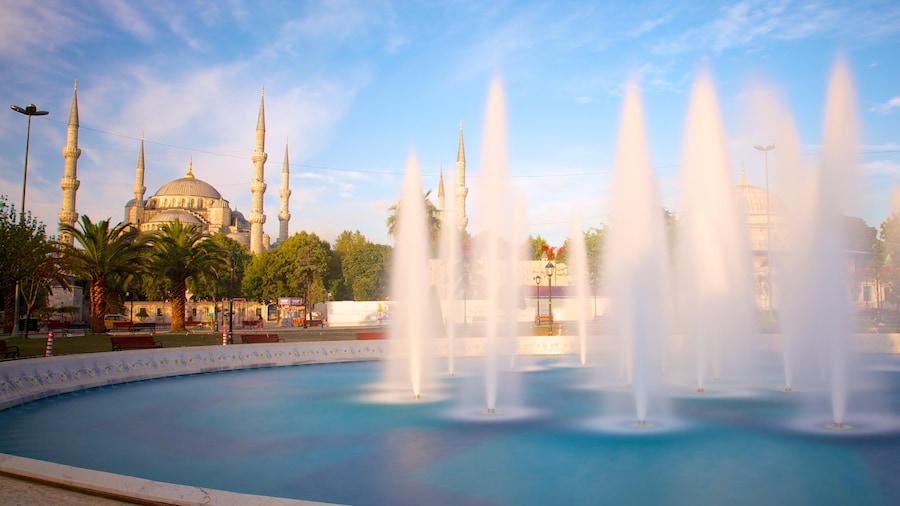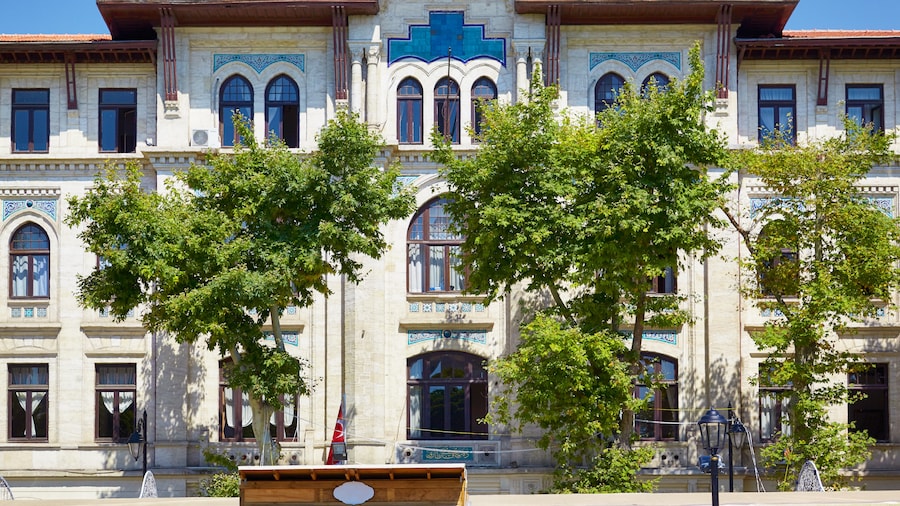The bright blue ceramic tiles that line the interior of this great traditional mosque are a sight to behold.
The Sultan Ahmed Mosque was designed with a focus on splendour and size, and, almost 400 years after its completion, it still dominates the Istanbul skyline. Built for its namesake, the Ottoman Sultan Ahmed I, this traditionally Islamic structure, with its six minarets and terraced domes, casts a striking silhouette.The best way to appreciate the scale and grandeur of the Blue Mosque is to arrive on foot from the Hippodrome. Take in the size of the building as you pass through the outer stone wall into the courtyard. Once you enter the building you will be struck by the beauty of the 20,000 brilliant blue tiles that give the mosque its nickname. Examine the more than 50 different intricate tulip motifs decorating the tiles. The blue painted ceiling and the stunning stained-glass windows only add to the ethereal effect of this beautiful space.Sultan Ahmed died a year after his magnum opus was completed in 1616 and you can visit his tomb on the north side of the mosque. Before you leave, make sure to visit the hospice and the madrasa, which is now used as a theological school. During Ramadan locals flock to the courtyard in droves after sunset.The mosque is a religious building, so you should be respectful and quiet at all times. Visitors must remove their shoes and women are expected to cover their heads. You'll find plastic bags for your shoes and headscarves if you need them at the entrance. Flash photography is not allowed.The Blue Mosque closes for prayer five times during the day. Worshippers are, of course, welcome at any time. You can take in an evening historical talk during the summer, or catch one of the light shows details about visiting hours and shows are available on the official website. Entry to the mosque is free, but you can contribute towards its upkeep if you wish. The Old City's Sultanahmet light rail and metro station is just a short stroll from The Blue Mosque.


